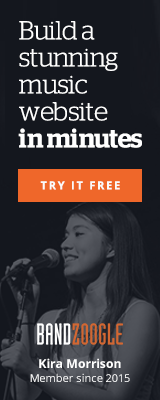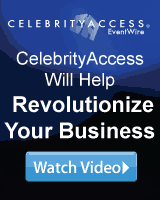 August 26, 2011
August 26, 2011 Growing a Crowd for Your Music Through Engaging Stories: FanBridge Co-Founder & CEO Spencer Richardson Shares Thoughts on Engaging Influencers One Chapter at a Time
 I recently spoke with FanBridge Co-Founder and CEO Spencer Richardson about how musicians can use the power of storytelling and the press to create momentum and build awareness. Since FanBridge offers tools to help bands build and manage their fan lists and relationships, Spencer has seen a variety of approaches artists use to build and convey their storyline. Here’s what he had to say:
I recently spoke with FanBridge Co-Founder and CEO Spencer Richardson about how musicians can use the power of storytelling and the press to create momentum and build awareness. Since FanBridge offers tools to help bands build and manage their fan lists and relationships, Spencer has seen a variety of approaches artists use to build and convey their storyline. Here’s what he had to say:
I have said many times that musicians have to learn the value in telling a story. You need a beginning, middle, and end. You need something your audience can follow easily.
When you can tell your story through your voice, then you’re really putting other channels like FanBridge to work for you; instead of trying to do the spinning plates trick, where you try to keep everything up at once, develop a momentum and synergy through your narrative. It starts with a story, and the channels are just a reflection of the story. The strategy becomes much easier. To me, telling a story to your fans and giving them an opportunity to help tell it themselves and bring it to their friends is really what it’s all about. That’s how you get people engaged. Sales and transactions all come from having an engaged audience. When people are listening to the story, then they want to support and figure out ways to make it grow. There’s a great book, which in itself is an interesting story, called “Crowds and Power” by Elias Canetti. Ultimately it says that when a crowd is aligned to a goal or a story, they want to grow. The crowd’s nature is to grow. Give them ways to grow and you don’t have to worry about anything else. A lot of that starts with a unified story. It gives people a place to rally.
It’s the role of the press to bring interesting things and stories to their audience. They are influencers of audiences. If you are being smart and not just trying to blast everybody at random, but being more focused, then it’s a more fruitful conversation. If you say these are the influencers in the press that I care about going after because I know their audience is relevant, you can bring them stories that are relevant to their audiences. I do think the press is an amplifying force. Ultimately I would solicit their thoughts. They can help teach you what their audience is interested in. That can help in shaping your story before even going to them. You have to learn from influencers of the audience you are going after if ultimately you want to be an influencer of that audience. We are living in an age where people don’t just consume one channel. It’s a network of channels. It’s a liquid market. Your story will enter there and if you do it in the right way it will engage them. And it doesn’t have to engage them 24 hours a day for them to be an engaged fan. I’m married now and I love my wife to death. But I am not necessarily thinking about her every single second of my life. Engagement is not being there 24/7, it’s about being a steady consistent force so that when you do have something interesting or something to tell within that broader story, they answer the phone.
The press is a partner in amplifying your story but you don’t need something in front of them 24 hours a day. You will burn out your audience and yourself. Stories have chapters for a reason. Books are not one 300- page section. You have to develop characters and change scenes. You want them reading the book for many, many years to come, not putting it down because they are tired.
The above excerpt is adapted from my new book titled “Amplify Your Story: Getting More Press Through the Art of the Pitch,” which you can download for free here. The book includes Q&As with leaders from Topspin Media, Bandcamp, ReverbNation, CD Baby, Artist Data, and New Rockstar Philosophy as well as the method I developed for crystallizing the most compelling press angles for your band and music. Learn more about FanBridge here.
 Expanding Your Fan Base,
Expanding Your Fan Base,  Interviews tagged
Interviews tagged  Fan Base,
Fan Base,  Fan Engagement,
Fan Engagement,  Marketing,
Marketing,  story |
story |  1 Reference
1 Reference 





Reader Comments (3)
Excellent points ! While for an artist, it all starts with the music, engaging the audience is another area to work on for most.
When I go listen to a band I'm not only wanting to hear their music but to be engaged, entertained, and smitten by their personality. I want the whole package.
The same can be said for the content they put on their websites or social media sites. I'm wanting to engage with their personalities. Understand more about their art. I don't just want a broadcast.
Thanks!
Greg
This is an excellent article, and so are Greg's comments in reply. People often say to me things like "Your music's pretty rough-sounding, but I really admire you for having your own opinions.". And that's just it. Some people who prefer my message to my music are willing to put up with the fact I'm not the world's most prolific musician, because they're tuning in just to see what I say next. Heaven forbid if the music world becomes over-professionalised! The ability to get up and have a go is what punk was supposed to be about, and what "progressive punk", if you'd call my music that, hopes to keep alive - and by using more chords than just three, I hope.
That's right. In writing songs or as a musician, we must be connected to our audience and it's all about process. Excellent!